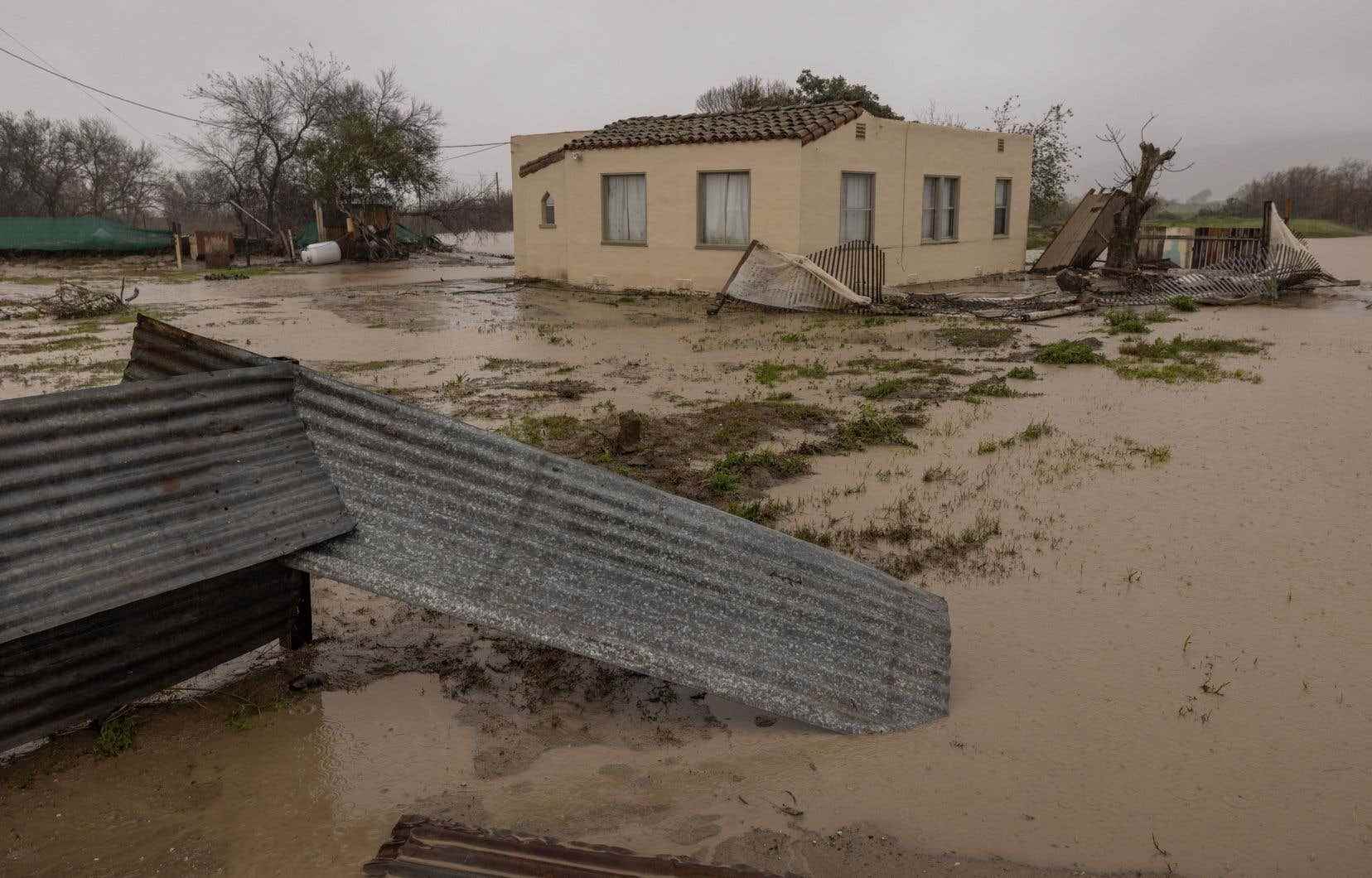US President Joe Biden has declared a state of major disaster in California, where further bad weather is expected on Sunday after three weeks of unprecedented rainfall that has killed at least 19 people.
Joe Biden has ordered federal aid to help residents and communities across the state repair damage caused since Dec. 27 by severe winter storms, which have caused flooding, landslides and slides of mud, according to a statement from the White House.
A major wave of rain – and mountain snow – swept through many areas of the most populous state in the United States on Saturday, whose soils are already saturated with water.
A new “atmospheric river”, i.e. a narrow band in the atmosphere carrying huge amounts of moisture from the tropics, is expected on Monday, a public holiday in the United States, bringing “new waves of extreme precipitation,” warns the National Weather Service (NWS).
Power lines were hit, while fields and roads were flooded.
The NWS expects “disastrous flooding” in the lower Salinas River Valley, an important agricultural region south of San Francisco Bay. “It’s not over,” California Governor Gavin Newsom warned at a press conference, arguing that although the rain was decreasing in intensity, the ground was waterlogged and the risk of flooding remained. therefore important.
Aware of the weariness of Californians after already several weeks of downpours, he said: “I urge all of us to maintain our vigilance and our common sense for the next 24 to 48 hours”.
Order to evacuate
Nearly 26 million Californians were still under a flood alert as of Saturday night, according to the NWS, and tens of thousands of them have been ordered to evacuate.
“I’m so angry, it just makes me want to cry,” Camilla Shaffer, a 59-year-old Briton who lives in Felton, south of San Francisco, told Agence France-Presse (AFP). been flooded three times in two weeks.
In this forest town, Amberlee Galvin and her mother saw the water rise to the ceiling of their ground floor “in the space of 10 minutes” on Monday, and even penetrate upstairs. “We were rescued by a neighbor in a canoe,” says the 23-year-old cook.
In the region of Salinas, a city of 160,000 inhabitants south of San Francisco where the eponymous river overflowed its bed, the flood affected the agricultural corners of the valley but spared the urban areas, noted Saturday morning a journalist from the AFP.
In Spreckles, a housing estate a few hundred meters from the river, most residents had not evacuated despite warnings from authorities this week.
“It seems that we have avoided the worst,” breathes Robert Zagajeski, out walking his dog in a light rain. According to forecasters, the river should begin to recede from Saturday.
Like the rest of California, Salinas, homeland of John Steinbeck, whose Literature Nobel was largely inspired to write his “Grapes of Wrath”, has a series of floods.
“We need as much rain as possible, but farmers can’t do anything with such wet fields,” sighs Zagajeski.
A few kilometers further, Erick Diaz watches the flooded fields from his modest wooden house not far from the river. Despite an evacuation order targeting 17,000 people in the area, he too remains at home.
“I have nowhere to go and so far everything is fine,” said the 30-year-old farm worker.
powerful blizzard
In the mountains, this precipitation translates into heavy snowfall, with more than a meter expected over the weekend in the Sierra Nevada, the authorities warning of the risk of avalanche and advising against any movement.
Authorities at the Lake Tahoe ski resort in Nevada released photos showing dozens of vehicles lined up on a road, blocked by a powerful blizzard.
At least 19 people have died since the start of this series of bad weather. In particular, drivers were found in their cars trapped by the waves, people hit by falling trees, a couple was killed by a landslide and bodies were washed away by the floods.
California is used to extreme weather conditions, and winter storms are common. Such a sequence, on the other hand, is unusual.
While it is difficult to establish a direct link between these series of storms and climate change, scientists regularly explain that warming increases the frequency and intensity of extreme weather events.
However, the torrential rains of the past few weeks will not be enough to end the drought that has hit this western American state hard for two decades, according to specialists.
